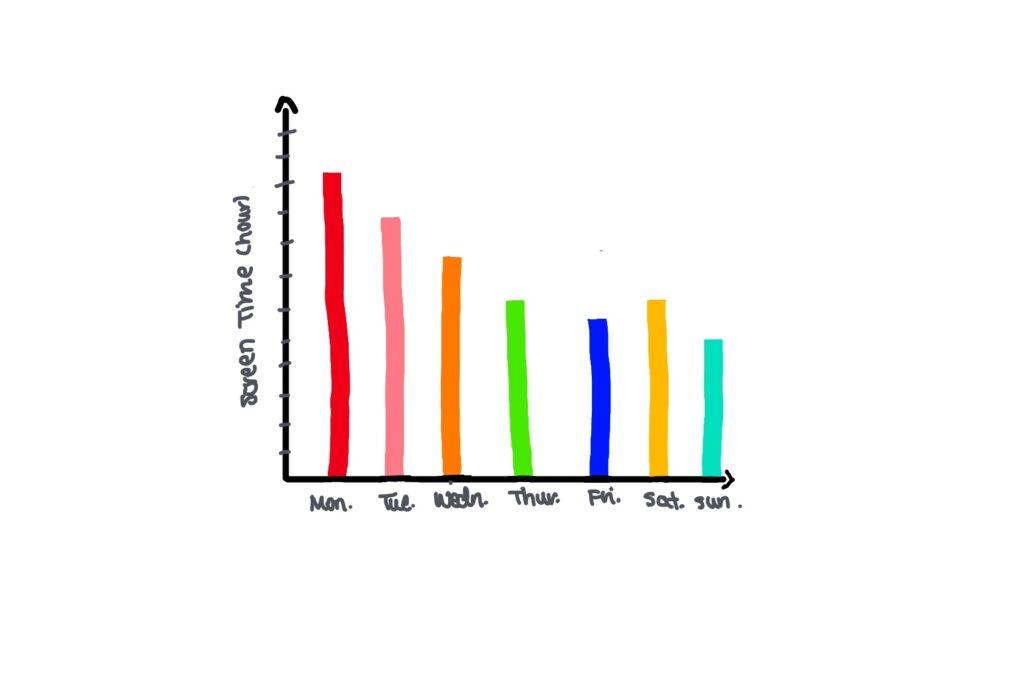Every Saturday night, I hear a “ding” notification from my laptop.
“Your average screen time for this week is 10 hours, a 9 percent increase from last week.”
Seeing my screen time skyrocket like an exponential graph was disturbing, but it was the harsh truth.
Since the start of school, I have been staring at my screen for 10 hours every day to do my homework, attend Zoom meetings, watch Netflix and talk to friends on Messenger. My laptop and I are inseparable.
I was unaware of how I spent my time and of the dangers behind my drastically increasing screen time, a jump from six hours to at least 10 hours a day. But after Googling the health impacts of excessive screen time, I learned that overexposure to blue light can increase my chances of having anxiety, depression and other mental health issues, as well as physical conditions like obesity.
To avoid these harmful effects, I decided I needed to reduce my technology usage.
I started by turning on the night shift mode on my computer to decrease blue light emission. Then I listed a thorough daily agenda in my planner along with the amount of time that I wanted to spend on each task. This allowed me to integrate breaks between Zoom classes and study sessions.
At the start of quarantine, I also moved my desk to the window so I could look up at the distant mountains when my eyes grew tired. And I now have a “No Phone Day” every Monday where I make sure my phone stays off, so I can fully concentrate on schoolwork.
After implementing these strategies, I feel healthier and more confident in how I manage my time. Now, I spend around seven hours every day online, a 30 percent decrease from the peak of my screen usage.
Even though the COVID-19 pandemic has completely flipped our everyday lives, I’ve learned we should still try to make the best out of the experience by paying attention to our health and trying to flatten the curve of both the pandemic and our screen time.


























